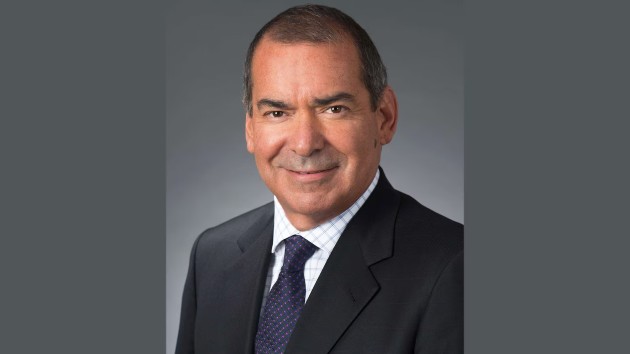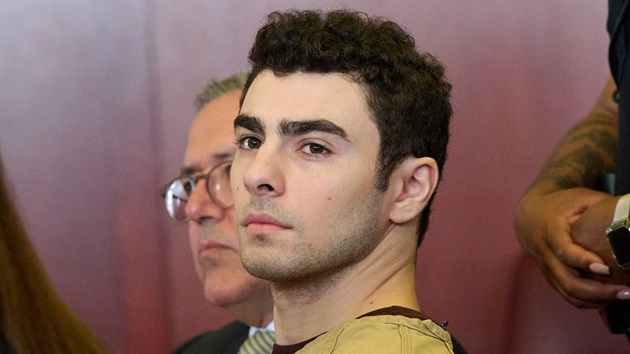How AI is being used to detect, treat cancer — and the potential risks for patients
Written by ABC Audio. All rights reserved. on July 21, 2023

(NEW YORK) — Artificial intelligence, or AI, is continuing to expand into many areas of our lives and one of those is cancer detection.
Researchers are using machine-learning to build tools in the realm of cancer detection and diagnosing, potentially catching tumors or lesions that doctors could miss.
AI is also being used to help treat patients or communicate with patients about the complexities surrounding their cancer treatments.
Despite the advancements that have been made, experts warn that there are drawbacks such as real fears that cancers could be over diagnosed and that there are biases when it comes to detecting cancers in white patients versus of patients of color.
“If you’re on the lookout for something, then, if you look in enough places, you’ll start to see it,” Dr. Brittany Fasy, an associate professor of computational topology at Montana State University, told ABC News. “So, I think how and when to use computer-assisted diagnosis is an important conversation that needs to happen between clinicians doing the diagnosis, the researchers developing the methods to assist them, and the patients who it affects the most.”
At MIT and Mass General Cancer Center, a team developed and tested an AI tool known as Sybil. Sybil was trained on low-dose chest computed tomography scans, which is recommended for those between ages 50 and 80 who either have a significant history of smoking or currently smoke.
For patients undergoing screening for lung cancer, Sybil was able to look at an image and accurately predict the risk of a patient developing lung cancer within six years.
Lung cancer is the number one leading cause of cancer death among men and women in the U.S. and around the world, but researchers said it’s a cancer not often talked about due to the stigma of it being considered a self-inflicted cancer.
“The incidence of lung cancer and people who have never smoked is rising and so lung cancer is really a disease that could affect anyone, anyone with lungs, which essentially means anyone is at risk for getting lung cancer,” Dr. Lecia Sequist, program director of the Cancer Early Detection and Diagnostics Clinic at the Mass General Cancer Center, told ABC News.
She said the goal with AI tools like Sybil is to detect cancer when it’s early and is more treatable rather than in the late stages.
“We’re not doing a good job of screening for lung cancer and like with other screening tests, the reason it’s important to do screening is to find cancers when they’re early stage and still curable,” Sequist said. “If you find a lung cancer, when it’s stage I or II, the patient can have surgery, and then has a high chance of being cancer free up to that point.”
That was the similar goal of an AI tool built and studied by investigators at Harvard Medical School, the University of Copenhagen and the Dana-Farber Cancer Institute.
Solely using patients’ medical records, the tool was able to identify those at the highest risk of pancreatic cancer up to three years before an actual diagnosis.
“Most pancreatic cancers just present much too late and therefore, patients have a very, very bad survival, which is why we’re working on this,” Dr. Chris Sander, study co-senior investigator and professor in residence of cell biology at Harvard Medical School, told ABC News. “Less than 20% survival, but if you see it, then the five-year survival goes up to 50%. If you see it, you can cut it out.”
He added that tools like this also have an economic benefit because if cancers are caught early, patients don’t have to potentially risk struggling to pay for late-stage cancer treatment.
“The more we can do gradually to move cancer treatment to an earlier stage where it’s detected earlier and treated earlier, that would be a major change in the way we deal with the cancer problem,” Sander said.
How AI could be used
Sequist says that the U.S. is not doing a good job of screening people for lung cancer, even those who are traditionally at risk, like smokers.
She would like to use a tool like Sybil to make lung cancer screenings available for everyone like colon cancer screening are, with people recommended to get colonoscopies at age 45.
“What I imagine Sybil being able to do for lung cancer screening is really make lung cancer screening something that everyone could qualify for and then Sybil is used to help us understand who is at high risk and who’s not,” she said.
Sequist continued, “I mean, that’s how we screen for other cancers. It’s only lung cancer, that we have all these barriers up around, ‘Well, you have to have smoked this much, or else you can’t access this test’ and so it can be very off-putting to people who are just trying to, do the best for their health.”
AI could also help patients undergoing cancer treatment. Penn Medicine developed an AI chatbot named Penny that exchanged text messages with patients to help guide them through their complex cancer treatment regimens and reduce the risk of mistakes.
Results showed about more than 90% of messages were accurately interpreted by the tool and there was at least a 70% adherence rate of participants taking their medications. However, Sander said people should not worry that AI is going to replace humans in the medical field.
“AI will be used in decision support. The AI tools will run and provide information and maybe make recommendations to the physicians, but the physician will be the ultimate decider,” he said. “So, this is decision support for the human expert, who is trained with ethical standards, and then together with patients, the physicians will make a decision as to what to do in particular.”
Drawbacks and pitfalls
For all the progress that has been made when it comes to AI cancer detection and treatment, there are also things to consider.
While AI has become advanced at detecting possible skin cancers, it is also heavily biased. Research has shown that AI systems for diagnosing skin cancer risk being less accurate for people with darker skin.
Dr. Adewole Adamson, an assistant professor in the department of internal medicine at the University of Texas at Austin Dell Medical School, told ABC News that, historically, the medical field has not done a good job gathering images of skin conditions, including cancer, in diverse skin.
“If you train an algorithm on a data set that inherently in itself is biased and does not have within it enough examples of cancer or whatever skin manifestation of disease, it will not be able to then accurately make that diagnosis once it’s fully trained,” he said.
This could mean that people with darker skin who have skin cancer could slip through the cracks or, conversely, every skin abnormality on people with darker skin is seen as a sign of skin cancer.
Adamson has been working to get a wider array of data sets to help make AI tools for skin cancer detection more accurate for all patients.
“The problem is this is the canary in the coal mine” he said. “If you’re going to already start building algorithms in dermatology that are biased, then it just only emboldens you to continue down that road, without actually equity being a fundamental part of building an algorithm, which I think is important if you’re going to unleash it on the general population.”
Additionally, Adamson says we need to be careful about making sure we are not overdiagnosing cancer.
A study partly conducted by Google in 2020 trained AI to spot breast cancer in mammogram scans. Researchers said the tool was able to do so at the level of — and even better than — a board-certified radiologist. However, past research has shown not every tumor in a person with cancer will become deadly and there are many people with cancers that don’t lead to death, Adamson explained.
“The problem with finding cancer, particularly finding early cancer, is that we have difficulty picking out which cancer is extra destined to progress and grow and metastasize and kill patients versus those cancers that would never be destined to grow progress, and actually harm patients,” he said.
“The point of cancer detection is not to find more cancer, it is to find more cancer that can potentially kill people and prevent that,” he continued. “It’s the prevention of cancer death, not finding more cancer.”
Adamson said his critiques do not mean he’s against AI being a useful tool but that these are considerations researchers needs to have before the technology is utilized broadly.
“This doesn’t mean that this technology isn’t promising, isn’t really powerful, isn’t something that is going to be important in the future,” Adamson continued. “It just needs to be responsibly developed and deployed.”
Copyright © 2023, ABC Audio. All rights reserved.





